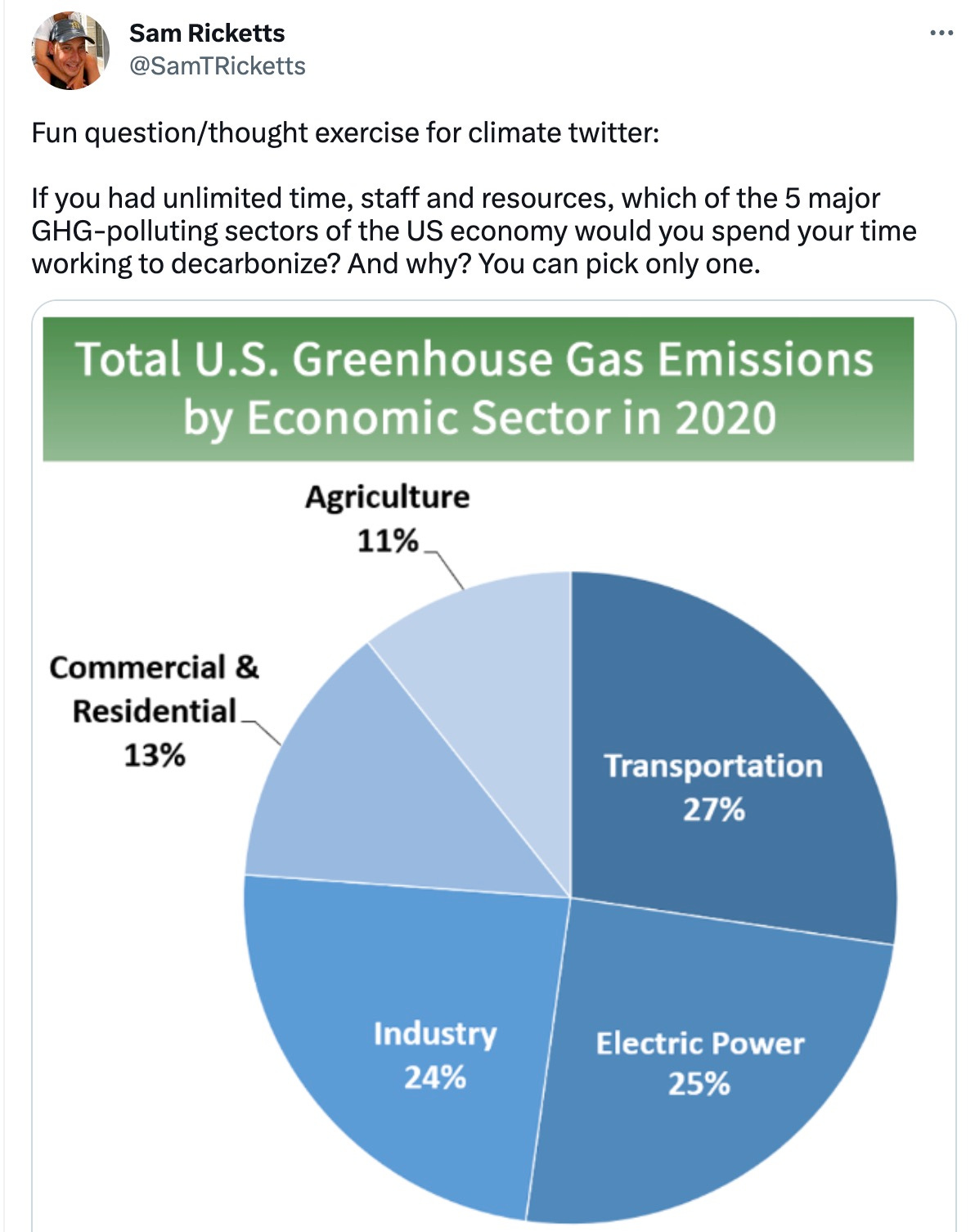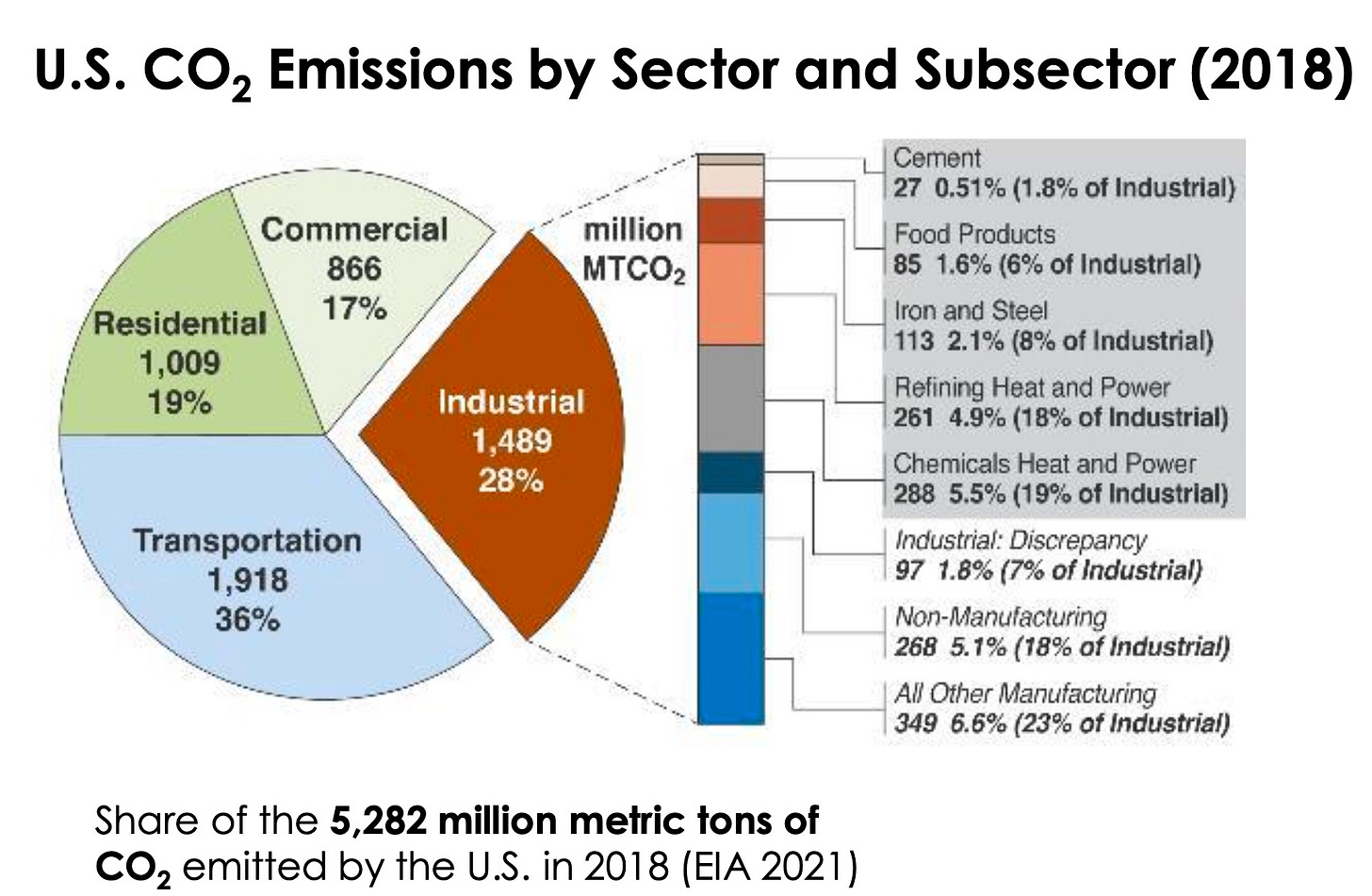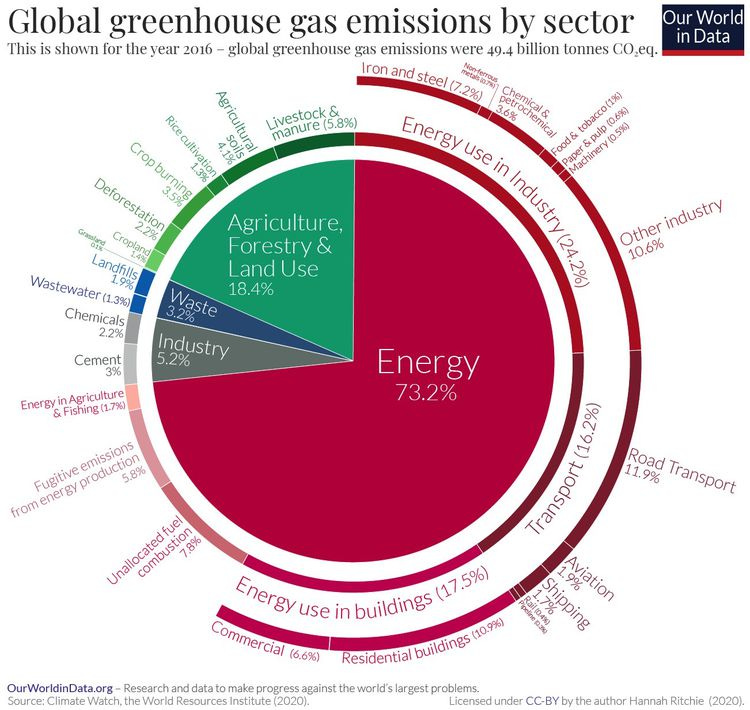This tweet keeps popping up in my timeline, aggravating me every time I see it. Because as Leonardo da Vinci told us, “Learn how to see. Realize that everything connects to everything else.” You can’t pick only one.
The pie chart comes from the Environmental Protection Agency, Sources of Greenhouse Gas Emissions, which breaks the sources into separate silos. Transportation is listed as separate from commercial and residential, but as transportation consultant Jarrett Walker has noted, “Land use and transportation are the same thing described in different languages.”
Futurist Alex Steffen has noted, “There is a direct relationship between the kinds of places we live, the transportation choices we have, and how much we drive.”
I wrote in my book Living the 1.5 Degree Lifestyle:
"It is not a chicken-and-egg, a which came first thing. It is a single entity or system that has evolved and expanded over the years through the changes in the form of energy available, and in particular the ever-increasing availability and reduction in the cost of fossil fuels."
When you look at transportation, 27% of vehicle miles travelled (VMT) are for commuting between houses and workplaces, 22% for shopping and errands, and 51% for social or recreational purposes. Basically, half our driving is driving between buildings. Most people have no choice because of our built environment.
So they all should be combined and called “Built environment emissions.” We have to deal with them together. In fact, we have to deal with everything together. Let’s go down this rabbit hole and look at all the pieces of the EPA pie chart.
The EPA has electricity listed as its own piece of the pie. But if you look at the Lawrence Livermore Sankey Chart that I have called “the chart that explains everything,” fully 72% of electricity generated goes into residential and commercial buildings. So the electricity pie slice is really mostly Built Environment Emissions, with a little going to industrial uses.
Industry is another big chunk of the EPA pie at 24%. And what is industry busy doing?
It’s making cement, which goes into buildings and infrastructure. I was shocked to see that one of the biggest chunks of industry emissions is from “refining heat and power.” It turns out that refining petroleum products takes a huge amount of energy, with an older source saying, “Refining petroleum accounts for about 4% of the total energy consumed in the United States and about 15% of all industrial consumption.” This table has it at 18%, and those are pure transportation emissions. Steel is another big component of industry. Where does it go?
66% of steel goes into buildings and cars. So the majority of industrial emissions should also be considered Built Environment Emissions.
The global picture is similar; look at where all the emissions are coming from- energy use in buildings, driving people and stuff between buildings, and making stuff to build buildings and transportation infrastructure. They are all Built Environment Emissions, probably 75% of that EPA pie.
It is all a demonstration of economist and physicist Robert Ayres’ thesis: “The economic system is essentially a system for extracting, processing and transforming energy as resources into energy embodied in products and services.” And those products are basically buildings and cars and the infrastructure that supports them. That’s why cars get bigger and sprawl gets sprawlier; making and using energy is our economy, and the more, the merrier.
The British group Built Environment Declares wrote,
"If we are to reduce and eventually reverse the environmental damage we are causing, we will need to re-imagine our buildings, cities and infrastructures as indivisible components of a larger, constantly regenerating and self-sustaining system."
This group gets this; it’s in their name. We must stop looking at separate pieces of the pie and recognize that it is part of a larger interconnected system that has to be redesigned.
So the answer to Mr. Rickett’s fun question, “which of the 5 major GHG-polluting sectors of the US economy would you spend your time working to decarbonize?” is that you can’t pick one. There are not five sectors. The pie is a lie. Four of them adding up to about 3/4 of all emissions are indivisible Built Environment Emissions because everything connects to everything else.









I just want to say I always enjoyed reading your Treehugger editorials and was confused as to why you seemed to have been “disappeared” from their site. Anyway, a search brought me here where I will gladly read your articles. Will also buy your book!
No matter how you slice the pie, there remains a constant. The essential answer is less heating and cooling (none between 13C-30C/55F-85F, https://greenbetween.home.blog), driving, flying, meat-eating, and population-growth (2 children max) while we work on the long-term green technology and infrastructure.